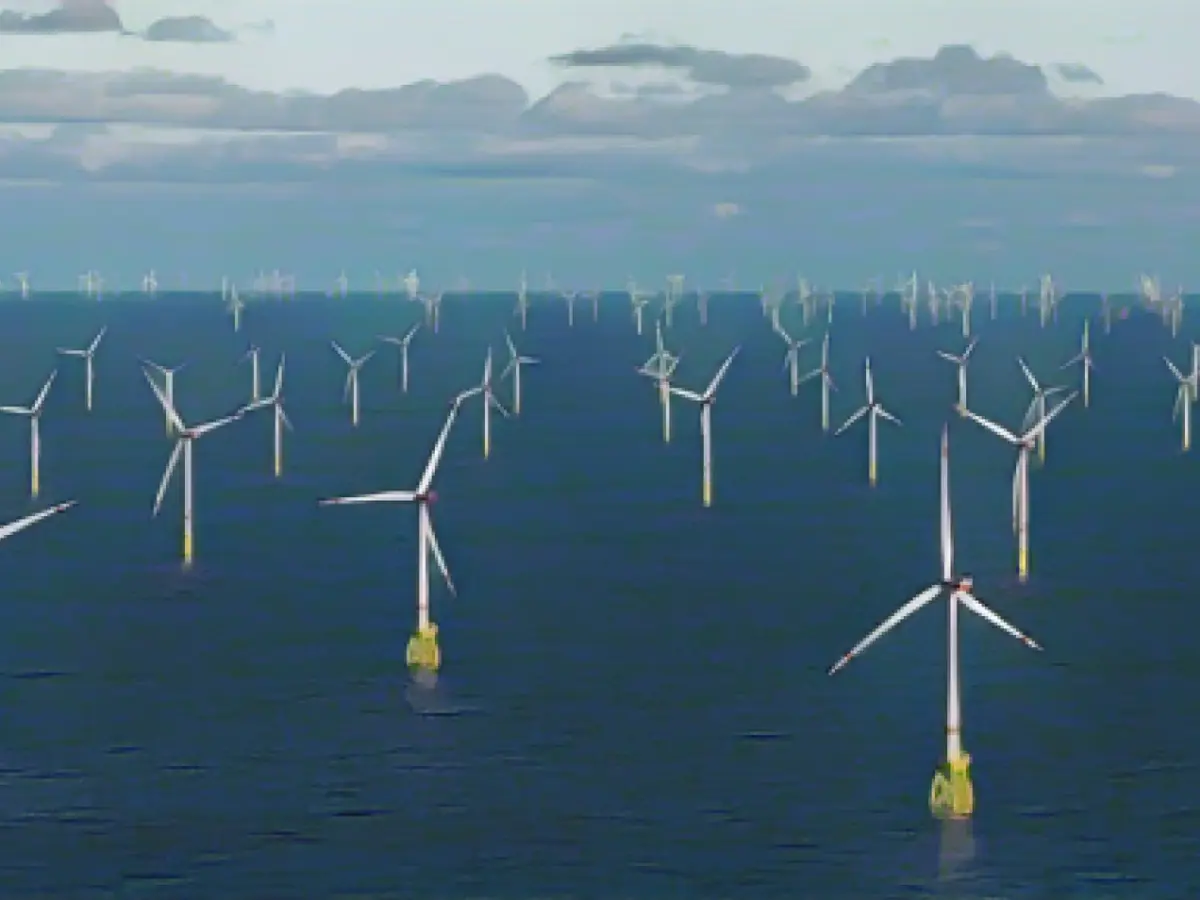Wind energy expansion demands more port space in Germany
The offshore wind industry is urging for up to 200 hectares of extra heavy-duty space in German seaports, as per an analysis released by the Offshore Wind Energy Foundation. This equates to the area of 260,000 car parking spaces or 270 soccer pitches. The renewable sector anticipates significant expenditures in the coming years to support this expansion. According to industry experts, around 7,000 new wind turbines will be required by 2045, with towering structures akin to the Eiffel Tower, heavy-duty steel foundations, and gigantic rotor blades stretching over 100 meters.
Seaports play a crucial role in the offshore wind energy sector, serving as bases for wind farm construction and dismantling, service centers, storage hubs, and manufacturing sites. Karina Würtz, Managing Director of the foundation, confirms this importance, emphasizing seaports' numerous duties in the offshore wind energy sector.
The German government aims to expand offshore wind power to 30 GW by 2030 and 70 GW by 2045, representing a 62 GW expansion within the following two decades. The expansion initiative is expected to boost the roles of seaports, particularly in Hamburg and Bremen, in the global offshore wind energy market. However, recent insufficient investments and increased focus on other sectors by German ports have raised concerns.
Competition in European seaports is intensifying due to accelerated expansion plans. Ports such as Eemshaven (Netherlands) and Esbjerg (Denmark) have significantly expanded their offshore wind sector presence, snatching market shares from German ports. By 2027, foreign port capacities may no longer be sufficient to support German expansion effectively.
Insights from Enrichment Data
Growing offshore wind energy projects require considerable port area expansion to cater to the logistics and maintenance needs of offshore wind turbines. Cuxhaven, Germany's Offshore Base, plans to develop a central logistics hub for wind energy expansion in Germany and Europe by building three new berths and terminals with a surface area equivalent to about 54 football pitches (approximately 4.5 million square meters) by 2028.
However, several challenges have arisen due to increasing European competition for port areas, including inadequate equipment for handling oversized cargo, logistical complications, coordination issues, environmental concerns, regulatory complexities, and technological adaptations. Efficient port infrastructure, streamlined logistics, and adaptive strategies are crucial to meet these challenges and support the offshore wind industry's development in Europe.








